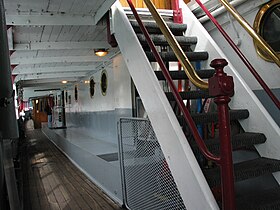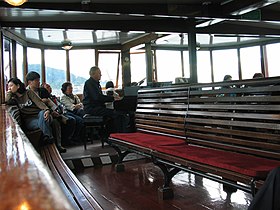
Queenstown is a resort town in Otago in the south-west of New Zealand's South Island. It has an urban population of 29,000.

A steamboat is a boat that is propelled primarily by steam power, typically driving propellers or paddlewheels. Steamboats sometimes use the prefix designation SS, S.S. or S/S or PS ; however, these designations are most often used for steamships.

Lake Wakatipu is an inland lake in the South Island of New Zealand. It is in the southwest corner of the Otago region, near its boundary with Southland. Lake Wakatipu comes from the original Māori name Whakatipu wai-māori.

PS Maid of the Loch is the last paddle steamer built in the United Kingdom. She operated on Loch Lomond for 29 years and as of 2022 is being restored near Balloch pier.
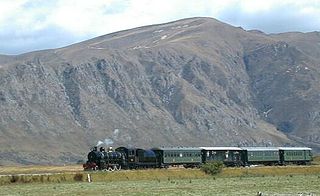
The Kingston Flyer is a vintage steam train in the South Island of New Zealand at the southern end of Lake Wakatipu. It used 14 kilometres of preserved track that once formed a part of the Kingston Branch. Originally, Kingston Flyer was a passenger express train between Kingston, Gore, Invercargill, and less frequently, Dunedin. It was operated by the New Zealand Railways (NZR) from the 1890s to 1957. In 1971, NZR revitalised the service as a tourist venture, later leasing the locomotives and rolling stock in 1982 to a private company. Since then, the Kingston Flyer has been through a number of owners, most recently being owned by the Kingston Flyer Ltd. A group of volunteers has restored the railway, rolling stock and locomotives to service. In July 2021 the Kingston Flyer received resource consent to operate, initially for tour groups.
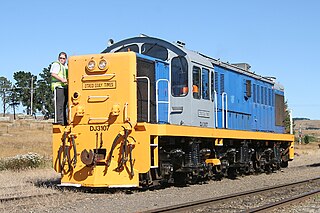
The New Zealand DJ class locomotive is a type of diesel-electric locomotive in service on the New Zealand rail network. The class were built by Mitsubishi Heavy Industries and introduced from 1968 to 1969 for the New Zealand Railways Department (NZR) with a modernisation loan from the World Bank to replace steam locomotives in the South Island, where all of the class members worked most of their lives. Nine of the locomotives remain in use, mainly with Dunedin Railways.
The following lists events that happened during 1912 in New Zealand.
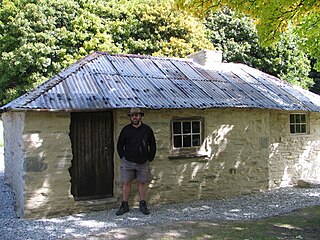
Macetown is an historic gold mining settlement in the Otago region of the South Island of New Zealand. It is now uninhabited but has become a tourist attraction. Access to the town is via an unsealed road that heads up the steep-sided Arrow gorge. This can be traversed on foot or by mountain bike, horse or four-wheel-drive vehicles. The road crosses the Arrow River or its side creeks 22 times and is not suitable for two-wheel-drive cars. The start of the road is found in the Arrowtown car park.
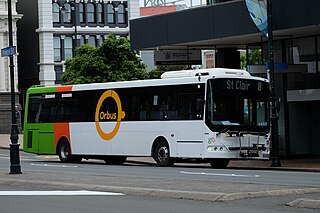
The public transport system of Otago centres around the cities of Dunedin and Queenstown, under the brand name Orbus. Public transport in the region is provided using buses and ferries. Despite sharing a name, the systems in Dunedin and Queenstown are isolated from one another.
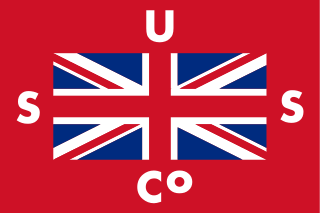
Union Steam Ship Company of New Zealand Limited was once the biggest shipping line in the southern hemisphere and New Zealand's largest private-sector employer. It was incorporated by James Mills in Dunedin in 1875 with the backing of a Scottish shipbuilder, Peter Denny. Bought by shipping giant P&O around the time of World War I it was sold in 1972 to an Australasian consortium and closed at the end of the twentieth century.

The Kawarau Gorge Suspension Bridge spans the Kawarau River in the Otago region in the South Island of New Zealand. The bridge is mainly used for commercial purposes by the AJ Hackett Bungy Company for bungy jumping - the world's first commercial bungy jumping site. The bridge carries walkers, runners and bikers on the Queenstown Trail over the river.
McGregor and Company Ltd was a heavy engineering company based in Dunedin, New Zealand. Apart from building the notable steam ship Earnslaw, the company also built early 20th century steam locomotives, of which there are no survivors. The company's factory was located in Thomas Burns Street, directly across the railway tracks from the city's railway station.

TSS Arahura was a twin screw steam passenger/cargo ship built for the Union Steam Ship Company. It was launched on the Clyde on 25 March 1905 and built by William Denny and Brothers Dumbarton at a cost of £52,000. It had a gross weight of 1,607 tons. The ship had accommodation for 201 passengers.

SS Lake Champlain was built in 1874 at Glasgow by the shipbuilders London & Glasgow Co. Ltd., she was launched on Christmas Day 1874 and sailed for a mere 13 years. On 13 April 1875 she departed on her maiden voyage from Liverpool to Quebec and then to Montreal. Until 1884 her regular run was between Liverpool and Quebec. On 23 November 1885, near Matane, she collided with the SS Bentholme which sank as a result. On 30 June 1886, she ran aground on the Antrim coast, but was refloated, sold, and renamed Lismore. On 8 June 1888 she was wrecked at Porto Plata in the Dominican Republic.
Lewis Adolph Henry Hotop was a New Zealand pharmacist, politician and Arbor Day advocate. He served as mayor of Queenstown Borough on three separate occasions.
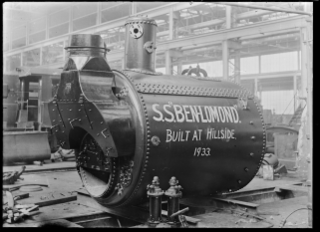
SS Ben Lomond was an 1872 twin-screw steamer plying the waters of Lake Wakatipu in New Zealand. For some years she was the oldest vessel on Lloyd's Register.
Leslie Hutchins was a New Zealand tourism operator and conservationist. Together with his wife, he bought a tourism company in 1954 that is today RealNZ; it still remains mostly in family ownership. Hutchins was one of the founding members of the Save Manapouri campaign and became one of the initial six Guardians of Lake Manapouri.

RealNZ is a New Zealand tourism company based in Queenstown. The company offers a range of travel, cruises and excursions in Queenstown, Milford Sound / Piopiotahi, Te Anau, Fiordland and Stewart Island / Rakiura. It also operates two skifields Cardrona Alpine Resort, and Treble Cone, and the International Antarctic Centre in Christchurch. The company is the successor of a series of acquisitions in the South Island tourist sector over more than 60 years. The brand RealNZ was launched in October 2021 to bring together multiple brands and businesses including Real Journeys that were previously part of the Wayfare Group, although some of the businesses have retained individual branding.








